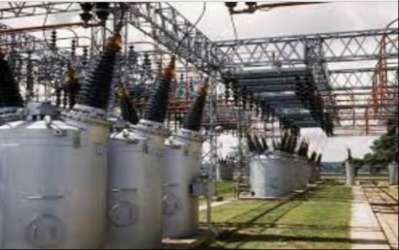
An oil circuit breaker is a type of breaker that uses oil as an insulation medium for arc extinction. It is an essential device in the power system that uses insulating oil as an arc quenching medium.
Oil circuit breakers use fixed and moving contacts for circuit protection in both substations and transformers
Each time there is a faulty current or short circuit, the contact opens up to trip off the circuit.
Where is the oil circuit breaker used?
Oil circuit breakers are used on high voltage applications such as substations, power grids, power lines, transmission and distribution systems for up to 220 kV.
Types of oil circuit breakers.
There are two major types of oil breakers, they include:
- Bulk oil
- Minimum or low oil circuit breaker
Bulk Oil Circuit Breaker (BOCB).
This type of circuit breaker uses a large quantity of oil for arc separation compared to a low oil circuit breaker. They are also called dead tank circuit breakers and are usually held at ground potential.
The amount of oil used in this breaker usually depends on the system voltage. For example, if the voltage is 110 kV, it will use 8 to 10,000 kg of oil. If it’s 220 kV, it will use 50,000 kg of oil.
Minimum Oil Circuit Breaker (MOCB)
This type of circuit breaker uses less oil compared to bulk oil circuit breakers. Its oil tank is placed on a porcelain insulator, to insulate it from the ground.
MOCB comes with an arc chamber enclosed in a bakelite paper. It also has two chambers, the upper and lower chamber.
The upper chamber is the porcelain which is enclosed with contacts, while the lower chamber is supported by the porcelain.
Parts of an oil-filled circuit breaker
The circuit breaker comprises
- An insulating cylinder
- Arc chamber
- Fixed and moving contacts
- Gas expansion chamber
- Oil level indicator
- Oil sump
- Terminals
- Oil draining
- Oil filling plugs.
Construction of oil circuit breaker
The construction of an oil circuit breaker is simple. It involves sinking the fixed and movable contacts of the breaker into a metal tank containing the transformer oil.
The oil serves both as an insulator and as a medium for arc quenching.
An air cushion between the tank roof and the oil surface is certain to help contain the displaced oil when gas forms around the arc.
That is why oil tanks are half-filled to a certain level where the air is tight in the tank.
The cover of the tank should be tight enough to prevent gas spillage during the interruption of faulty current.
Working Principles
A good oil circuit breaker carries currents along the circuit when closed (ON). But if a fault occurs, the movable contacts separate from the fixed, and an arc struck in-between them.
The arc causes a release of much energy that increases the temperature of the oil, turning them into gas.
The high-pressure gas surrounds the arc and its volatile bubbles displace the oil, pushing apart the contacts.
Advantages of an oil circuit breaker
The advantages of oil circuit breakers are:
It consumes less oil
The dielectric strength of oil is always high
Occupies less space.
Reduces the risk of fire outbreaks
Reduce frequent maintenance
Disadvantages
Because it uses less oil, the risk of carbonation is high.
Removing the gas in the contact area is had
Requires more time to arc
Do not allow interruptions with high-speed
It may form an explosive mixture with air.
Maintenance of oil circuit breakers
Maintenance of an oil circuit breaker is important and should be regular.
This includes the detection and maintenance of any conditions that may lower performance. The most common contaminants are carbon, moisture, and sludge.
Clean often, recondition the oil, and also remove carbon deposits to make the breaker last.
You can also follow the manual instructions provided by the manufacturer for greasing and lubricating.
Frequently Asked Questions
1. My circuit breaker is leaking oil. How can I repair it?
To repair an oil leaking circuit breaker, find the leaking point, which may be the bushing or the drain valves.
Repair it using the drill and injection method, custom design enclosures, or the clamp injection method with a rubber-based, non-adhering sealant to repair the breaker.
You can also contact us for the repair.
2. Which oil is used in the oil-filled breaker?
We use mineral oil in oil circuit breakers because it is a better insulator.
3. What is the function of the circuit breaker
The primary function of a circuit breaker is to protect an electrical circuit from power surges or short circuits. Any time it detects the overcurrent, it trips the current flow to prevent hazards.
Related article: